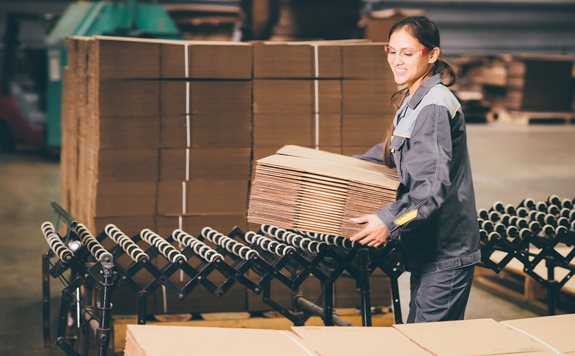
Boldt Takes On Multi-faceted Paper Machine Rebuild During Pandemic
December 9, 2020The Boldt Company
had a narrow window of time to rebuild a paper machine for ND Papers—just 45
days, to convert a bleached, lightweight, coated paper asset into one that
would produce an unbleached linerboard and corrugated medium. The tight
schedule meant shutting down production for over a month while they brought in
skilled tradespeople to complete a broad scope of work from the “wet end” to
the “dry end” of the machine. In those early days, no one knew we were on the
verge of a global pandemic.
Pre-planning for the project started in fall of 2019 and was followed by
construction crews arriving on-site in January of 2020. The work plan called
for hundreds of tradespeople to join the 250 workers currently employed at the
Biron Division in Wisconsin Rapids during the next five months. Precautions
such as social distancing, wearing protective masks and daily temperature
checks suddenly had as much importance as job site safety and technical machine
specs.
Despite Pandemic, Work Continues
ND Paper and The Boldt Company leaders were marshaling their COVID response
teams on parallel tracks. Both companies had the same goals—maintaining the
safety of their workforces, while advancing the work for the benefit of their
customer. ND Paper made the decision to continue the work on the machine
install.
“Our precautions were not just about protecting the health of our employees,
but also about protecting their livelihoods,” said Dave Falk, vice president
and general manager of the ND Paper Biron Division. “It was essential that we
moved forward with this project as speedily as we could, but also in a safe
environment from a COVID standpoint.” With that in mind, teams started solving
the problems of how to work effectively within a pandemic.
Boldt Creates Center of Excellence
For Boldt that meant creating a task force to address facilities and
technology, then tapping experts in its own technical services division to pull
together a center of excellence. “We quickly accessed the best thinking in the
industry to address all the issues surrounding the pandemic,” said Will
Lichtig, Boldt’s executive vice president, performance & innovation.
“Our guiding principles were the health of the individual and the health
of the organization,” said Holly Lifke, Boldt’s executive vice president of
human resources. To make a complicated situation more complex, guidelines
needed to be established for craft workers at job sites in states with varying
rules. Boldt teams worked closely with project owners, many of whom were also
operating as essential industries.
ND Paper was one of those essential industries and its leadership soon convened
a corporate team that met daily—weekends included, to develop a comprehensive
COVID-19 policy. Team members then adapted corporate guidelines for specific
situations at the Biron mill. “To be successful, you need a leadership team
that believes the pandemic is a serious matter and takes rapid action. We had
that from the top down in our organization,” Falk said.
In addition to preparing the mill for their own employees, ND Paper also had to
consider the health and safety of the 650 tradespeople, working across three
shifts, needed to convert the B25 machine to produce unbleached paper. At the
peak of construction there were as many as 900 mill employees and contract
workers on site over three shifts. “Everything we did was about risk
mitigation, we didn’t make any differentiation between contractors or our team
members,” Falk said.
